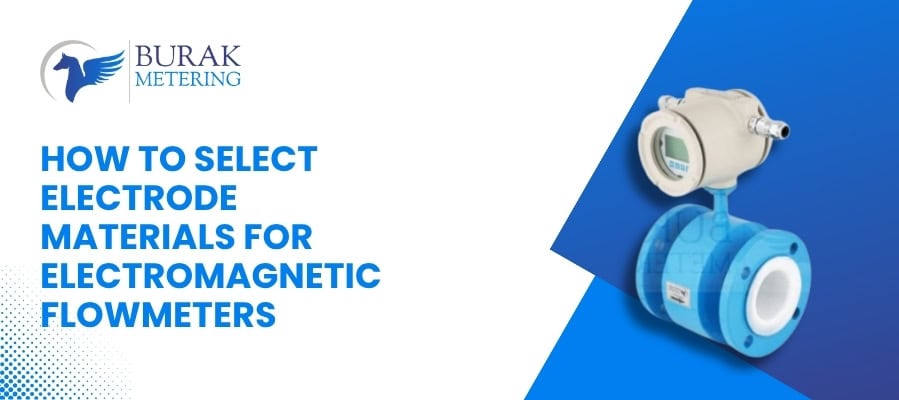 Phone
Phone

An electromagnetic flowmeter measures flow velocity by inducing a voltage in a conductive fluid. The electrode material influences accuracy, longevity, and compatibility. Choosing the right electrode is vital.
This article describes key factors, common materials, and trade-offs in simple terms.
Want to learn more about electromagnetic flow meters? Check our complete guide on what electromagnetic flowmeters are and how they work.
The electrode must resist corrosion in your fluid. Some fluids are mildly corrosive (e.g., soft water or mild chemicals). Others are harsh (strong acid, chlorine, oxidizing salts). Use chemical resistance charts and test data.
If the fluid has low conductivity (e.g,. ultra-pure water), the electrode must pick up weak signals. Materials like stainless steel 316L or Hastelloy are often preferred in low-conductivity fluids.
Learn more about the minimum conductivity required for electromagnetic flowmeters to understand the limits and impact on measurement stability.
Fluids with particles (slurries, pulp, sand) can cause wear. Coated or harder materials (e.g., tungsten carbide-plated stainless steel) resist abrasion.
The electrode material must sustain the operating temperature and pressure of the process. Some metals degrade or become unstable at high temperatures.
High-end materials (platinum, tantalum) are expensive. You may choose more economical metals if the process is not extremely harsh. Balance cost with performance.
In some applications, electrodes must tolerate cleaning (acid wash, abrasive cleaning). Choose materials that survive the cleaning agents you will use. Also consider whether self-cleaning electrodes are possible.
In installations with ground potential differences or electrical noise, the electrode material and configuration matter. Sometimes a three-electrode design helps mitigate interference.
Want a quick refresher on the working principle of electromagnetic flowmeters can explore how induced voltage is generated and measured.
Below is a comparison of standard electrode materials and typical applications:
| Material | Strengths / Use Cases | Limitations / Notes |
|---|---|---|
| 316L Stainless Steel | Good for water, wastewater, general process fluids. Affordable and widely used. | Not ideal for strong acids, high chloride, or oxidizing conditions. |
| Hastelloy (B / C / C22 / C276) | Excellent for aggressive chemical media. Hastelloy C handles oxidizing acids. | More expensive. In some very aggressive media, even Hastelloy may face limits. |
| Titanium (Ti) | Good resistance to chlorides, seawater, alkaline media. | Weak in strong reducing acids (e.g. pure sulfuric in non-oxidizing condition). ( |
| Tantalum (Ta) | Very high chemical resistance. Useful in strong acids (except hydrofluoric, some alkalis). | Soft metal (less abrasion resistance). High cost. |
| Platinum (Pt, or Pt alloys) | Excellent corrosion resistance, stable at high temperature. | Very expensive. Sometimes chemically active (e.g. with peroxide) so care needed. |
| Tungsten Carbide Coated Stainless Steel | Good for highly abrasive media (slurries, pulp). | In chemically aggressive fluids, coating may wear or suffer corrosion underneath. |
Selecting electrode materials involves trade-offs in corrosion resistance, cost, and conductivity. To compare broader device trade-offs, explore the advantages and disadvantages of electromagnetic flowmeters.
Selecting electrode materials for electromagnetic flowmeters involves trade-offs among corrosion resistance, electrical conductivity, abrasion strength, temperature, and cost. Use data, test when possible, and match the electrode to your actual fluid conditions.
If you require expert support in electrode selection or full electromagnetic flowmeter solutions, contact us.
Burak stands out as a reliable electromagnetic flowmeter manufacturer in India. Our products are built with high precision, durability, and local service backing. We provide full support in deployment, calibration, and after-sales care. Choose Burak because we blend global engineering standards with on-ground presence. We are among India’s top electromagnetic flowmeter manufacturers.